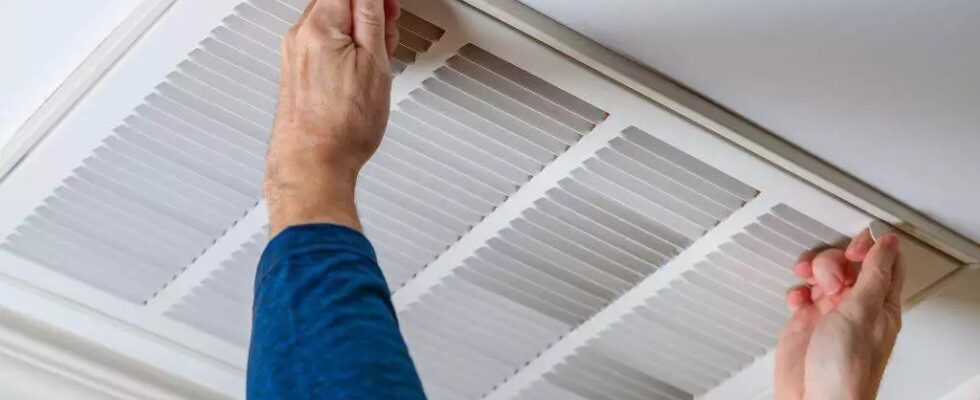Improving the air quality in your home is an important step toward ensuring a healthy environment. There are several simple things you can do that can have a big effect on air quality. This includes:
Keeping your air ducts clean
Air ducts are the beating heart of any home’s air circulation system, providing a conduit for air conditioning, heating, and filtering. However, over time ducts can become clogged with dust and other contaminants that can begin to circulate throughout the home.
To ensure the highest quality air in your home and avoidance of related health problems, it is important to invest in duct cleaning services every couple of years. Doing so will provide clean ducts that are free of debris and dirt, reducing airborne irritants and improving your home’s air quality significantly.
Not smoking indoors
Many of us spend a great portion of our day indoors and in confined spaces, either at home or at the workplace. During that time, we often do not consider how much the air quality can affect our well-being and impact our overall health. One simple way to start improving your indoor air quality is by avoiding smoking indoors.
Even if smoking is done away from where you are currently sitting, the smoke will travel and linger throughout the area regardless, thus increasing the poor air quality in the space. Not only that but secondhand smoke increases health issues such as asthma, reduced lung function, and impaired lung development. It is essential to take steps towards achieving good air quality through measures like this in order to maintain healthy living while spending time indoors.
Improving ventilation
Improving ventilation is one of the most important steps homeowners can take to improve the air quality in their homes. When there is insufficient airflow, it can lead to a build-up of pollutants and stale air. Examples of poor ventilation include closed windows and blocked air vents that are obstructed by furniture or drapery.
Therefore, homeowners should be sure to make it a priority to keep their windows open as much as possible and check frequently for blocked vents. Additionally, running ceiling fans or box fans will also help maximize airflow when necessary. It is important to note that these efforts will have lasting benefits both in terms of improved indoor air quality and lower energy bills.
Using natural cleaning products
One way to improve the air quality in your home is to use natural cleaning products. These often contain no or fewer chemicals and lower emissions of volatile organic compounds (VOC). VOCs are known to cause eye, nose, and throat irritation as well as headaches, dizziness, and fatigue.
Using natural cleaning agents with ingredients like vinegar, baking soda, lemon juice or essential oils can effectively reduce airborne toxins leaving your home smelling fresher and cleaner breath a little easier. Not only will switching to natural cleaning products help keep your indoor air healthy but it is an eco-friendly alternative that reduces negative environmental impacts outside of your home.
Reducing humidity levels using a dehumidifier or air conditioner
Keeping air quality at a comfortable level in your home during the summer can be difficult with high humidity levels. An effective way to dramatically improve air quality is to reduce humidity by using a dehumidifier or air conditioner. Dehumidifiers, specifically designed for indoor use, will remove moisture from the air making it easier to breathe and reducing bacteria that can accumulate in moist, stagnant air.
Air conditioners are not just good for cooling off, they also help reduce humidity levels while providing filtered air throughout your home. Both a dehumidifier and an air conditioner are valuable tools that can help keep your home at an optimal temperature and refreshingly crisp all summer long.
Vacuuming carpets frequently to reduce dust mites and pet dander
Reducing the number of dust mites and pet dander in your home can significantly improve air quality, resulting in improved respiratory health and comfort. Vacuuming carpets on a regular basis is an important habit to develop if you are looking to achieve this goal. Not only does vacuuming get rid of surface dirt and debris, but it also captures those pesky particles that linger deep within the fibers of your carpets.
Carpets and rugs are usually heavily trafficked areas of the home, so these little critters accumulate quite quickly. By regularly vacuum cleaning these areas, as well as hard-to-reach places like baseboards and corners, you can keep your family breathing freely throughout the day.
Planting foliage and flowers to help the natural purifying process
Improving air quality in our homes is something that should be taken very seriously in order to live healthy lives. One way to do this is to add foliage and flowers to your living space. Not only will they bring color and life into the area, but they also filter out toxins from the air and help release good things into it like oxygen.
Plants can absorb particulate matter, volatile organic compounds (COVs), and allergens which help clear the air around us. So, why not try adding a few houseplants throughout your home? Reach for leafy options such as Snake Plant or Bamboo Palm for maximum purification benefits.
Taking these steps to improve your home air quality will go a long way in ensuring a happy and healthy home for you and your family.


